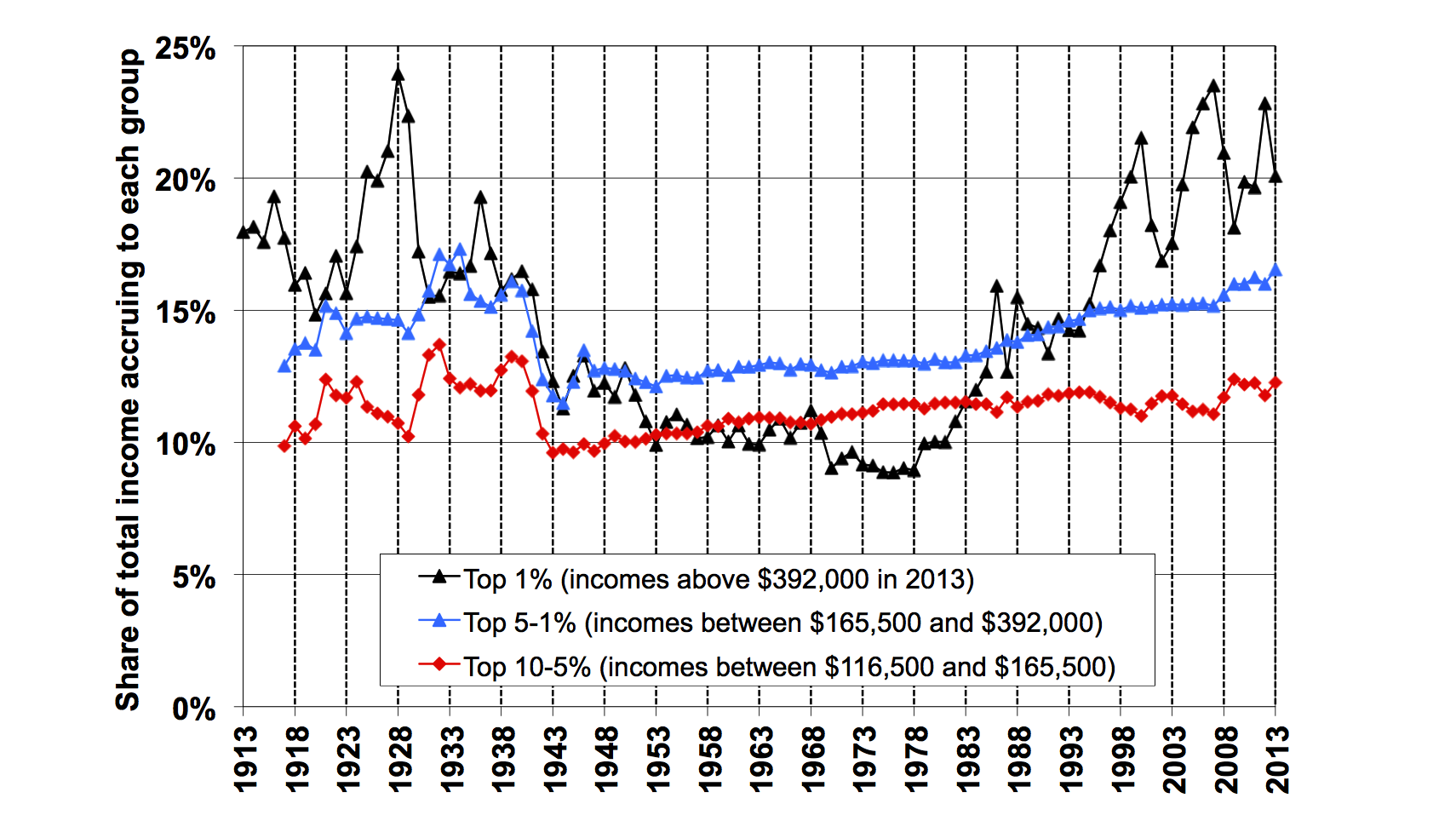The real villain of David Brooks' parable
College graduates aren't ruining America. Billionaires are.


It's the Italian deli meats, stupid?
In a much mocked piece for The New York Times, David Brooks argues that the cultural signifiers of the college-educated, like the food they eat (e.g. "soppressata, capicollo, and a striata baguette") or the culture they consume ("David Foster Wallace"), are their way of keeping the working class down. The college-educated, he writes, have "become devastatingly good at making sure the children of other classes have limited chances to join their ranks."
Brooks isn't wrong, per se. America has created a viciously rigid, class-based social hierarchy, one that does benefit the top 20 percent, i.e. Brooks' "college-educated class." But this argument needs to be placed in its proper context. Sure, the top 20 percent use their clout to cling to their advantages, but those efforts aren't occurring in a vacuum. The real villain of this story is a familiar one: the 1 percent.
The Week
Escape your echo chamber. Get the facts behind the news, plus analysis from multiple perspectives.

Sign up for The Week's Free Newsletters
From our morning news briefing to a weekly Good News Newsletter, get the best of The Week delivered directly to your inbox.
From our morning news briefing to a weekly Good News Newsletter, get the best of The Week delivered directly to your inbox.
That differentiation is important. The class that Brooks attacks isn't made up of hedge-fund managers or Fortune 500 CEOs. It's doctors, lawyers, journalists, accountants, programmers, designers, managers, academics, and myriad other upper-class professionals who earn at least six figures. They're usually urban, cosmopolitan, upwardly striving, and socially liberal.
And they can be politically dangerous, thanks to their perch on the precipice of society's upper echelon. They can afford to live in the same cities the top 1 percent populate — but just barely. They have great salaries and benefits, but often still feel like they're "struggling." Whenever people insist someone earning $250,000 is "middle class," and thus shouldn't get a tax hike, that's the top 20 percent flexing their muscles.
One of the experts cited in Brooks' piece, Brookings Institution fellow Richard V. Reeves, has argued that the top 20 percent ferociously defend their privilege with tax, zoning, and educational policies, squashing economic mobility for the bottom 80 percent in the process. Brooks finds these "structural barriers" interesting but "less important than the informal social barriers that segregate the lower 80 percent" — like unpronounceable Italian deli meats.
But what if both Brooks and Reeves are wrong? What if the problems they identify aren't problems at all, but symptoms?
A free daily email with the biggest news stories of the day – and the best features from TheWeek.com
Consider the total amount of income produced in America: People in the top 2-10 percent (the blue and red lines) saw their portion of the pie grow since 1980 — but not by much. Meanwhile, the share going to the top 1 percent doubled:

Or, consider average growth in incomes since 1980 for each percentile: The top 20 percent saw positive growth, while incomes for the bottom 80 percent shrank. But even for the top 20 percent, there wasn't much growth. It's income growth rates for the top 1 percent that soared:
[[{"type":"media","view_mode":"media_large","fid":"197373","attributes":{"alt":"","class":"media-image","height":"347","typeof":"foaf:Image","width":"600"}}]](Graph courtesy of "Distributional National Accounts: Methods and Estimates for the United States," by Thomas Piketty, Emmanuel Saez, & Gabriel Zucman.)
In terms of the raw amount of money being moved around, the changes benefiting the top 1 percent dwarf everything else going on in the economy, gains by the top 20 percent included. What's important about the top 20 percent, then, is how they illuminate the extent to which American society has been reorganized around the top 1 percent.
Americans work as they always have, but their labor isn't translating to higher pay like it once did. Instead, the wealth they're creating is being gobbled up by the top 1 percent through anti-worker national policy, monopoly power, and Wall Street extraction. That largesse is like a shotgun: It's got a bit of spread beyond the 1 percent, creating "hotspots" of job growth and opportunity around them, mostly in major cities. Meanwhile, the rest of the economy suffers stagnation and decline.
The top 20 percent of people are the ones who can afford the housing and educational costs of breaking into those hotspots. But this arrangement isn't comfortable.
They're terrified of losing their precarious perch, and they have the social and political clout to defend themselves. So they invest massive resources in their children's development. They gobble up the best neighborhoods and schools. Like all homo sapiens, they develop cultural cues that distinguish themselves from other tribes in American life, from particular tastes in food and movies to especially intense brands of socially liberal politics.
All these machinations can make the top 20 percent an unattractive and politically destructive bunch. But their behavior is a totally human and predictable reaction to their larger context: the top 1 percent's total domination of the economy. That's the key point a lot of commentators from both sides of the aisle miss, possibly because the top 20 percent's critics are usually top 20 percenters themselves, operating in the same political milieu shaped and dictated by the 1 percent overlords.
Conservatives and center-right thinkers like Brooks, for instance, tend to assume the cultural stratification actually causes the economic stratification, rather than the other way around. That's a convenient position because it allows them to beat up on liberals in the top 20 percent while also avoiding the need to drastically reform the economy.
Meanwhile, center-left thinkers like Reeves concentrate on combating the moral perfidies of the top 20 percent, rather than the 1 percent's power. They want to reform zoning to give more people access to good neighborhoods and schools, for instance, but they don't consider ending the linkage between school funding and local property taxes, which effectively yokes schools' fortunes to local neighborhood wealth. They want to kill a few upper-class tax giveaways, but they don't talk about returning to New Deal-era tax rates.
But actually solving the underlying problem in the American economy would require far deeper and more radical reforms than either side is willing to contemplate. So don't hold your breath.
Jeff Spross was the economics and business correspondent at TheWeek.com. He was previously a reporter at ThinkProgress.



